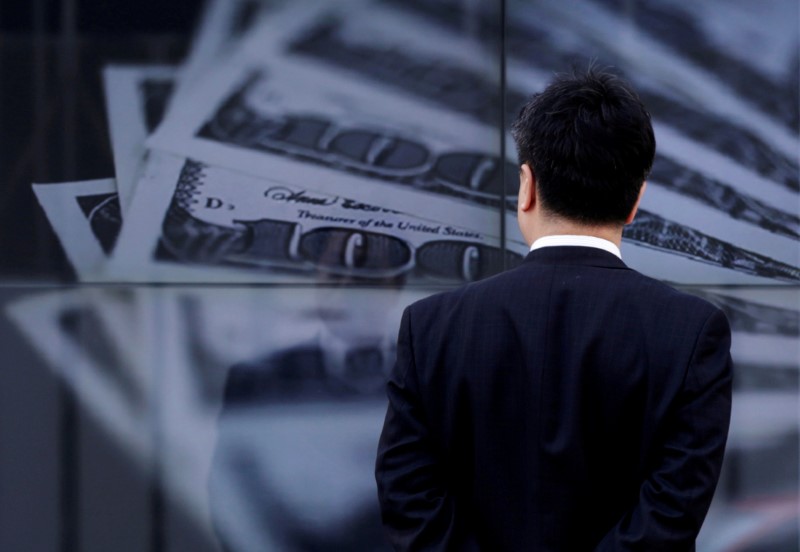By Tom Westbrook
SINGAPORE (Reuters) - The dollar slid in another seismic shift to price in more U.S. interest rate cuts on Thursday, as President Donald Trump sapped market confidence with a coronavirus plan light on details.
The greenback dropped as far as 1% to 103.32 yen , fell as much as 0.6% to $1.1333 against the euro (EUR=) and lost 0.6% to the safe-haven Swiss franc .
Riskier currencies were punished as the fearful mood sent the Australian dollar down 0.6% and the South Korean won skidding 1% , and losing even more ground to the rising yen.
Trump announced on Wednesday a ban on travellers from 26 European countries entering the United States for a month.
He unveiled economic steps to counter the virus but his address from the Oval Office was light on medical measures beyond assurances that "the virus has no chance against us".
"The market was looking for more," said Moh Siong Sim, currency strategist at the Bank of Singapore.
"A travel ban is part of the solution, but the more important parts are still missing. They are really the public health measures: Paid sick leave, free testing, free treatment," he said.
"The market is right now looking for perhaps more action from the Fed, given the disappointment from the White House."
Indeed, futures markets reacted swiftly. They are now pricing in the U.S. Federal Reserve moving the lower end of its benchmark funding band to zero when it meets next week.
"The deflationary shock that we had assumed would trigger a U.S. entry into the zero-yield world is turning out to be a combo of trade war, oil price war and COVID-19 virus," J.P. Morgan's long-term strategists Jan Loeys and Shiny Kundu said in a note.
"(There are) close to even odds now of an official U.S. recession this year."
Trump's address came with markets already in turmoil amid a string of increasingly dire news on the coronavirus.
The longest bull run in U.S. stock market history has ended, with market talk that selling to cover margin calls was keeping gold and bonds from rallying. (N)
The World Health Organization overnight described the outbreak as a pandemic. Italy, where deaths rose by nearly a third overnight, has shuttered all shops except supermarkets, food stores and pharmacies.
The yen was last up 0.8% on the greenback and soaring against other currencies, with gains around 1% on the Australian (AUDJPY=) and New Zealand dollars (NZDJPY=) and 2% on the won (KRWJPY=).
Australia on Wednesday announced an $11.4 billion stimulus package including wage subsidies and cash payments to small businesses - though the Aussie slid further with the glum mood and growing recession fears. [AUD/]
Investors are now waiting to see how aggressively the European Central Bank acts at its meeting later on Thursday.
Traders expect a cut to the main deposit rate by 10 basis points. But it is no certainty since rates are already at a record-low -0.5% and further cuts could hurt bank margins and so squeeze lending.
A press conference is due at 1230 GMT in Frankfurt, after the monetary policy meeting. The euro steadied around $1.1296 in the meantime.
On Wednesday, the Bank of England slashed interest rates by 0.5 percentage point, though there are doubts the outsized move will be enough to fight the virus' impact.
The British pound last stood at $1.2803 , near this week's low.
"There's a sense to which currency markets are going to reward the currencies of countries that are seen to be using whatever space they've got for easier fiscal and monetary policy," said Ray Attrill, head of FX strategy at NAB.
"(But) even if the ECB wheel out a cocktail of lower rates, stepped up QE, more long-term ... in itself, that's not going to inspire a huge amount of confidence that the eurozone economy is going to escape recession. The hope would be that we'll have something more tangible on the fiscal side sooner rather than later."
